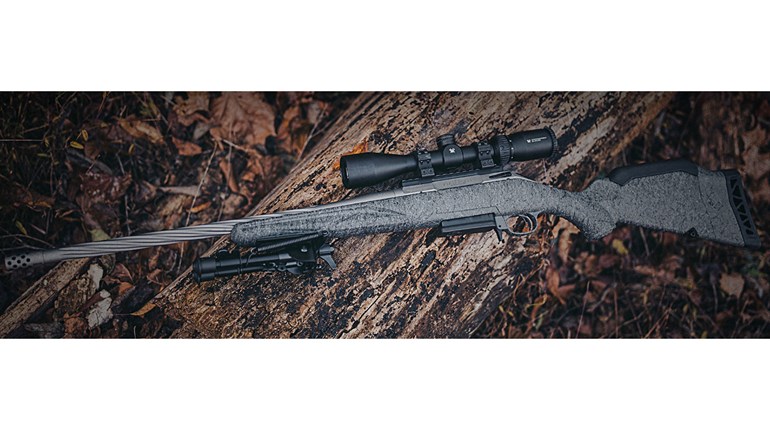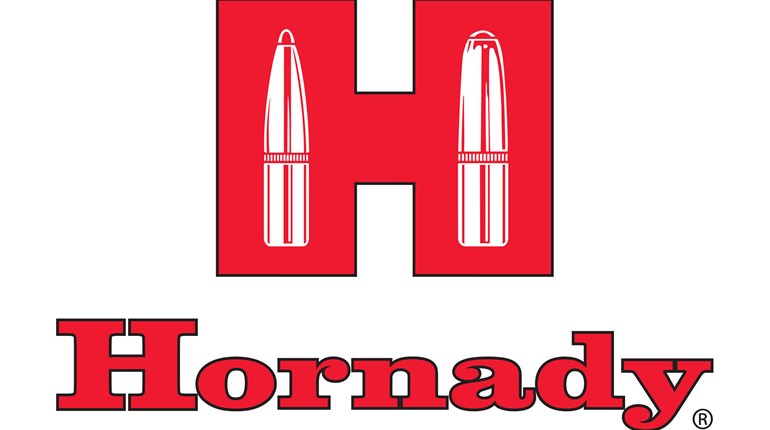
Laying prone at the Crusader Range at the SAAM Shooting School on the FTW Ranch in Barksdale, Texas, I was presented with the challenge of making two consecutive shots: the first at 325 yards, and the second at 500 yards, with only 10 seconds between the two. Upon report of the first, the countdown began. While the first was steep downhill to my left, the second was much flatter, but almost 90 degrees to my right. It would require setting up for the first shot, and making not only a scope adjustment to compensate for the difference in trajectory, but completely realign my shooting position to punch the steel plate. All this to simulate a game animal moving at varying distances, and to teach the skills needed to make the shot—or sometimes to teach you what shots are beyond the shooter’s capability.

Having been to this facility several times, and being familiar with the ever-changing winds which flow through those canyons, I've found that a flat-shooting cartridge with a decent velocity and a high ballistic coefficient (BC) can make your life much easier. This particular day I was shooting the classic Remington Model 700 rifle, chambered for the brand-new Hornady 7mm PRC; this new design certainly got the job done.
Hornady has made waves with their 6.5 PRC (Precision Rifle Cartridge), which was based on the now-obscure .300 Ruger Compact Magnum, as well as the .300 PRC, based on the .375 Ruger; both parent cases were designed by Hornady in conjunction with Ruger. While the .300 PRC has a maximum cartridge overall length of 3.700 inches and requires a magnum action for best performance, the 6.5 PRC has a 2.955-inch overall length and can fit in a short-action receiver, the new 7mm PRC sits right in the middle—clearly designed for the long-action receiver, and putting the cartridge smack in the middle of the previous two releases.

The 7mm PRC maintains the same 0.532-inch rim and base diameter as its older siblings; you cartridge hounds may recognize that number as the H&H Belted Magnum rim and belt diameter, but the PRC family and many other Hornady designs use that for the body diameter. Being a rimless design, the 7mm PRC will headspace off the shoulder, and it keeps the same 30-degree shoulder angle as its relatives. The 7mm PRC’s case length comes in at 2.280 inches, with a maximum cartridge overall length of 3.340 inches, the same as the .30-06 Springfield.
There are currently three loads available, but at the time of this writing, the only one I could get my mitts on for testing was the 180-grain ELD Match, cruising along at a muzzle velocity of 2975 fps. The also a 175-grain ELD-X Precision Hunter softpoint running at 3000 fps, and a 160-grain CX Outfitter at a muzzle velocity of 3000 fps. Measuring the factory cartridges, I observed an average overall length of 3.2910 inches, which means there might be a bit of room to seat that long, sleek bullet out even further, but based upon the way it shot, I see no reason to do so. That long sleek bullet has a G1 BC value of 0.796, and the folks at FTW clocked it at 2955 fps—certainly in step with advertised velocities. And for starters, the 100-yard accuracy was certainly sub-MOA, with some groups running as tight as ½-MOA during our range sessions to zero the rifle.

As per the usual FTW routine, targets are engaged at all sorts of distances, from sane hunting scenarios to next-zip-code shots, and the 7mm PRC handled them all well. Our rifles were topped with Swarovski Z8i 3.5-28x50mm scopes, with the BRX-1 reticle; while larger in both magnification and objective lens size than I would normally choose on a hunting rifle, these were good choices for reaching out past 1,200 yards. While the scope’s elevation turret was marked in mils (with a series of raised yardage markers, which I felt were absolutely perfect for hunting), I will describe the trajectory in inches of drop, just to illustrate the point.
With a 200-yard zero, the 7mm PRC will rise 1.4 inches at the 100-yard mark, dropping 6 inches at 300 yards, 17.1 inches at 400 yards and 33.7 at 500 yards. Being completely honest, with a cartridge of this velocity and trajectory I’d prefer to use a 250-yard zero. Doing that will see a rise of 2.50 inches at 150 yards, but a 2-inch drop at 300 yards, and a 6-inch drop at 350, giving me a dead-hold on a deer’s heart to roughly 325 yards. If simplicity appeals to you, a trajectory like this will cover the vast majority of you hunting shots. With this zero, 400-yard shots will drop 13 inches, and 500-yard shots drop 27 inches.

While I personally have no business shooting at unwounded big game past 500 yards (a self-imposed limit, based on my real-world experiences), we did have fun stretching the 7mm PRC’s legs on steel targets, taking it all the way out to 1,500 yards confidently, and making several hits just past the one-mile mark. Bottom line? The 7mm PRC has the goods to make long range shots confidently, and as this is American Hunter, our concerns are targets much closer than that of the true long-range competition shooter.
Recoil? I found the 7mm PRC to be totally manageable, though some folks who don’t regularly shoot magnum cartridges proclaimed it to be a bit stiff. I have had some 7mm Remington Magnum rifles beat me up much, much worse than did the Model 700 in 7mm PRC, and putting 60 to 75 shots per day from the prone position didn’t crush my shoulder. In a hunting situation, where you’d spend a bit of time zeroing the rifle, and then firing a few shots at game, I can honestly say that you wouldn’t feel the recoil at all.

Does the hunting and shooting world need a 7mm PRC? Well, I think the answer to that question is yes. Yes, the .300 PRC offers heavier bullet weights, yet it requires a longer action and comes at the price of much stiffer recoil. The 6.5 PRC is a great cartridge, but with bullet weights south of 145 grains, I feel it is limited in the game species for which it is applicable. A 175-grain lead-core hunting bullet, or perhaps a 160-grain monometal, will allow the 7mm PRC to join the “all-around” club, being able to take all North American game shy of the huge coastal grizzlies, and the majority of African species with the exception of the true heavyweights. All this in a beltless case which won’t have any of the stretching issues that the belted cases have, which offers great concentricity and excellent accuracy; I can’t see any reason not to choose the 7mm PRC.
Looking for previous installments of our "Behind the Bullet" series? We've got you covered.
• .275 Rigby
• .340 Weatherby Magnum
• .416 Ruger
• 27 Nosler
• .257 Roberts
• 7mm Weatherby Magnum
• .300 PRC
• .350 Rigby Magnum
• .450 Nitro Express
• .17 Hornet
• 7mm STW
• 6.8 Western
• .375 Ruger
• .223 Remington
• 6.5x55 Swedish
• .416 Remington Magnum
• .300 Winchester Short Magnum
• 28 Nosler
• 6.5 PRC
• .22 WMR
• .458 Winchester Magnum
• .22 Hornet
• .280 Ackley Improved
• .240 Weatherby Magnum
• .458 Lott
• .264 Winchester Magnum
• .348 Winchester
• .33 Nosler
• .260 Remington
• .30-30 Winchester
• .416 Rigby
• .358 Norma Magnum
• .22 LR
• 7mm-08 Remington
• 8mm Remington Magnum
• .338 Federal
• .224 Valkyrie
• .338-06 A-Square
• 9.3x62mm Mauser
• .257 Weatherby Magnum
• .45-70 Government
• .300 H&H Magnum
• .25-06 Remington
• .30-06 Springfield
• 6.5 Creedmoor
• .300 Remington Ultra Magnum
• 7mm Remington Magnum
• .470 Nitro Express
• .280 Remington
• .300 Winchester Magnum
• .270 Winchester
• .222 Remington
• .45 ACP
• .404 Jeffery
• .44 Remington Magnum
• .41 Remington Magnum
• .243 Winchester
• .338 Winchester Magnum
• .357 S&W Magnum
• 6.5-284 Norma
• 8x57 Mauser
• .38 Smith & Wesson Special
• 7x57mm Mauser
• 9mm Luger
• .35 Whelen
• .454 Casull
• .375 H&H Magnum
• .45 Colt
• .22-250 Remington
• 10mm Auto
• .308 Winchester




































